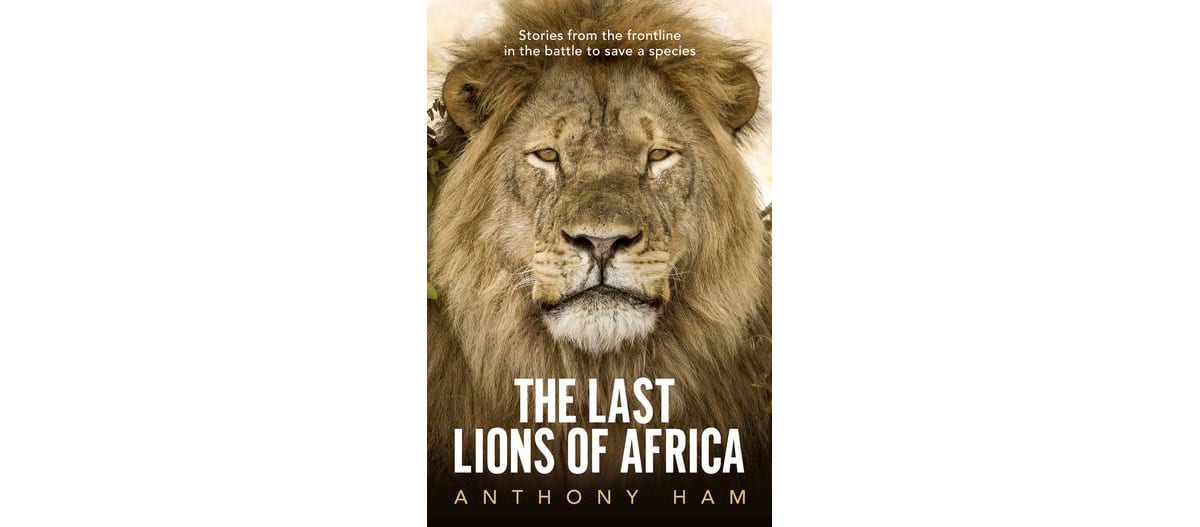
Mar 12, 2021 The Last Lions of Africa: Stories from the Frontline in the Battle to Save a Species by Anthony Ham
Asian wild tigers are clinging to existence in relatively few protected areas located mainly in India, Russia, Nepal and Bhutan. The vulnerability of these populations is reflected in the excitement generated by the announcement that the wild tiger population had recently increased from a global population of 3,200 in 2010 to almost 3,900 in April of 2016. Compare these numbers to the estimated 100,000 wild tigers across the world in 1900. Now the lions of Africa are heading in the same direction. In 1960, it was estimated that there were around 100,000 lions in Africa but, today, most people think there may be as few as 20,000. However, Lion Aid has recently argued that there may only be around 10,000, down from an estimated 30-36,000 in 2006. The human (and domestic animal) population of Africa is currently projected to triple in the next eighty years, and it is hard to see how lion numbers can do anything but decline further.
Given this perspective, the title of Anthony Ham’s book is entirely appropriate. We are now looking at the Last Lions of Africa, whether there are 20,000 or 10,000. Ham is a very experienced nature and travel writer who hails from Australia but who has spent a lot of time travelling to wild places in Africa in search of stories. But this is not your typical book about a disappearing charismatic creature full of political battles and conservation biology. Ham is a wonderful craftsman of the written word and an excellent describer of character (both human and animal). He crafts the book around a few singular characters – both human and lion – and, across five chapters, relates five different stories about lions and people involving lion biology, human cultural traditions and human-lion conflict that together, paint a wonderful, although ultimately rather depressing story about lions and people and how they do, or do not, manage to live together.
In the first chapter, we meet Meiteranga, a Maasai warrior or murran who started his warrior life in the traditional Maasai way by killing a lion. In the following years, he killed four more lions and gained considerable prestige among the Maasai as a result (although the Kenyan authorities were less impressed). But Meiteranga ended up switching from lion killing to joining the Lion Guardians, a group seeking to persuade the Maasai to deal with lion predation by warning herders about lion presence and helping to build better bomas (protected enclosures) where cattle could stay overnight. With the help of Maasai recruits, the Lion Guardians have had considerable success in reducing lion predation on cattle and have virtually ended the retaliatory killing of lions. The lion population in their area has more than doubled and the group has a very successful track record in recovering lost cattle. The Lion Guardians are demonstrating that humans and lions can co-exist – at least in Maasai lands where humans already had a very strong connection to lions.
The second chapter takes us to Hwange, the national park in Zimbabwe occupied at one point by Cecil, the lion killed in a bow trophy hunt by an American dentist. Ham describes the Hwange landscape in which the lions live and details the challenges and upheavals that the lions experience. In his hands, we appreciate the connections and the different characters among the various leonine players in this landscape. Life for a lion in Hwange is complicated whether one is a mature male trying to protect one’s pride (mostly with the assistance of another male) or a mature female trying to protect one’s cubs when the male leadership of a pride changes. What he reports is cutting edge research conducted by a WildCRU conservation biology group who have been expanding our understanding of lion society. Ham describes in considerable detail the interactions of different lions and the negative consequences of any disruptions caused by humans (whether a trophy hunter, a villager seeking to poison a lion that preyed on livestock, or of a lion that is killed by a passing train). The lions in Hwange may be protected but they do not always stay in in the park.
The third chapter tells the remarkable story of Lady Liuwa, a lone lioness (and the only lion in 2004 living in the Liuwa National Park in Zambia). Lady’s solitary state led her to befriend Tembo, a ranger known as Mr. Liuwa, and a documentary film maker who was regularly in the park. Lady’s friendship with the two men was not her only remarkable characteristic. It is not easy for a solitary lion to survive but she managed to do so for at least four years.
The last two chapters cover the author’s search for lions in the vast reaches of the Kalahari National Park (and desert) in Botswana followed by a discussion of what is happening in the vast Selous National Park in Tanzania and an examination of an outbreak of man-eating lions in the Rufiji District of southern Tanzania alongside the Park.
I wholeheartedly recommend this book for anyone interested in wildlife conservation in general and lions and conservation in Africa in particular. Ham uses his five examples to examine and debunk some common assumptions about lions, about how to conserve lions and about the challenges for humans of living in lands where wild lions roam. He brings empathy and enlightenment to the problems of wildlife and people in Africa, and he does so while drawing the reader into the places and the lives of the people and animals who inhabit the five landscapes he chose.


